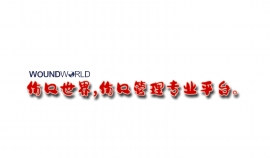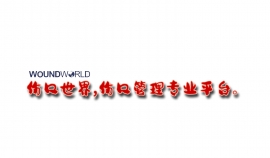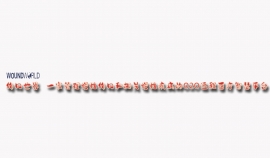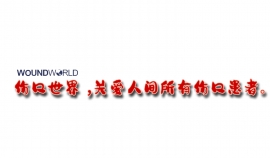文献精选
王玉俗1,褚文辉2,李久波3,赵全民1N,李春义4※
(1.吉林农业大学中药材学院,吉林长春130118;2.台州学院生命科学学院,浙江台州317000;3.长春市农业机械研究院, 吉林长春130000;4.中国农业科学院特产研究所特种经济动物分子生物学国家重点实验室,吉林长春130112)
收稿日期:2019—10—19
基金项目:中国科学院A类战略性先导专项(XDAl6030305)
作者简介:王玉俗(1994一),男,贵州省遵义市人,在读硕士研究生,从事特种经济动物干细胞及相关研究。
※通讯作者:李春义,男,教授,博士生导师,从事鹿茸生物学研究:赵全民,男,副教授,硕士生导师,从事经济动物疫病研究。
摘要:鹿茸软骨中富含血管,不但能修复缺陷还能实现再生,是研究软骨缺损修复的良好天然模型。由于鹿茸干细胞所分化的软骨分布着丰富的血管网络,所以其ECM中可能含有大量促进软骨生成的细胞因子和功能蛋白。本文就软骨缺陷修复进行综述,对使用鹿茸干细胞ECM修复软骨缺陷的初步结果进行总结,并提出展望。
关键词:软骨修复;ECM;干细胞;鹿茸 中图分类号:Q786 文献标识码:A 文章编号:1001-4721(2020)01.0064.05
Research Progress of Stem Cell Extracellular Matrix in Repairing Carti--lage Defects and Antler Stem Cell Extracellular Matrix
WANG Yu·SUl,CHU Wen-hui2,LI Jiu·b03,ZHAO Quan-minl※,LI Chun-yi4※
(1.College of Traditional Chinese Medicine,Jilin Agricultural University,Changchun 130118,China;2.Academy of Life Sciences,Taizhou University,Taizhou 317000China;3.Changchun Agricultural Machinery Research Institute,Changchun 130000,China;4.StateKey Laboratory for Molecular Biology of Special Economic Animals,Institute of Special Wild Economic Animals and Plants,Chinese Academy of Agricultural Sciences,Changchun 130112,China)
Abstract:Antler cartilage is rich in blood vessels,which can not only promote defect repair, but also regenerate itself, thus antler is a good animal model to use for the study of cartilage defect repair.Because the cartilage differentiated from antler stem cells is rich in vascular net—works,its extracellular matrix(ECM)contains a 1arge number of cytokines and functional proteins that can promote cartilage for mation.In this paper, the currentstatus of repairing cartilage defects was reviewed,and the preliminary results of using antler stem cell ECM to repair cartilage defects were summarized,and the prospects were put forward.
Key words:cartilage repair.ECM:stem cell:antler
Author: Corey Heerschap
Corey Heerschap is Wound/ Ostomy Clinical Nurse Specialist at Royal Victoria Regional Health Centre in Barrie, ON, Canada, and a PhD student at Queens University in Kingston, ON, Canada. He is the President-Elect of Nurses Specialized in Wound, Ostomy and Continence Canada, Inaugural Panel Member of the Canadian Pressure Injury Advisory Panel, and Education CoLead for the Commonwealth Wound Care Resource Alliance.
Artificial intelligence is rapidly changing the healthcare landscape. Advancing technologies such as large language models are providing new tools for educating clinicians, students, and individuals living with wounds. Wound care clinicians should be aware of the benefits of this new technology, how it is impacting, and could impact, wound care education, and current limitations to the technology and tools available. This article outlines broadly the current state of AI in healthcare and discusses the implications of this technology on wound care education as well as its current limitations.
Corey Heerschap is Wound/Ostomy Clinical Nurse Specialist at Royal Victoria Regional Health Centre in Barrie, ON, Canada, and a PhD student at Queens University in Kingston, ON, Canada. He is the President-Elect of Nurses Specialized in Wound, Ostomy and Continence Canada, Inaugural Panel Member of the Canadian Pressure Injury Advisory Panel, and Education CoLead for the Commonwealth Wound Care Resource Alliance.
Author: Joyce Black
Joyce Black is Professor, College of Nursing, University of Nebraska Medical Center, Omaha, Nebraska, US
Despite the frequency of pressure ulcers on the heels, little is written about them. While these ten top tips will not fill the literature gap, it may help you with this common problem.
Helen O’Neil
Citation: O’Neil (2023) Pharmacological treatment of painful neuropathy in adults with diabetes. The Diabetic Foot Journal 26(1): 20–3
Key words
- Diabetic neuroarthropathy
- Neuropathic pain
- Pharmacological therapy
Article points
1. Painful diabetic neuropathy is common in people with diabetes and is difficult to manage clinically.
2. Guidelines recommend amitriptyline, duloxetine, gabapentin or pregabalin as initial pain management options.
3. Patients often do not respond to monotherapy, so combination pharmacotherapy may be required.
Author
Helen O’Neil is Senior Medicines Optimisation Pharmacist, South Tyneside and Sunderland NHS Foundation Trust, UK
Diabetic neuropathy is one of the most prevalent chronic complications in people living with diabetes and painful diabetic neuropathy is difficult to manage clinically. Guidelines recommend offering a choice of amitriptyline, duloxetine, gabapentin or pregabalin as initial treatment for neuropathic pain. It is recommended that pharmacotherapy is offered in a stepwise approach to ensure tolerability and effectiveness of individual medications. Patients often do not respond to monotherapy and, therefore, combination pharmacotherapy may be required. The aim of treatment is to improve quality of life for patients living with painful diabetic neuropathy by reducing pain and promoting increased participation in all aspects of daily living.




